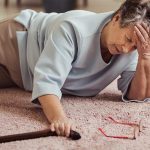How Alendronic Acid Destroyed My Life

Alendronic acid (bisphosphonate) is a prescription medication used to help your bones stay as strong as possible. Taking alendronic acid can help if you have, or are at risk of developing, osteoporosis. This is a condition that causes your bones to get weaker and be more likely to break.
In people with osteoporosis, the bones become porous and weaker, increasing the risk of fractures, especially in the hip, spinal vertebrae, and some peripheral joints, such as the wrists. The International Osteoporosis Foundation (IOF) estimates that over 44 million people in the United States currently have osteoporosis.
Alendronic acid was first described in 1978 and approved for medical use in the United States in 1995. In 2019, it was the 96th most commonly prescribed medication in the United States, with more than 7 million prescriptions.
Alendronic acid is available as a standard tablet, a soluble tablet that dissolves in water, or as a liquid that you drink. Alendronic acid is known as Fosavance when it’s mixed with colecalciferol (vitamin D3).
Alendronic acid and the people who use them
Despite its many beneficial effects against osteoporosis, alendronic acid has come under the searchlight of regulators after claims by people that the drug ruined their lives. In this article, we present a collection of stories of people who recalled how alendronic acid destroyed their lives.
Spindles wrote “I was on alendronic acid for a total of ten years, yes, ten years and if I knew then what know now I would never have taken them. I had a cough for months but the doctor put it down to acid reflux/heartburn and put me on omeprazole. I have had a couple of endoscopies, the second one showing oesophagitis and gastritis which I believe was probably caused by the tablets. Yes, I know you only need to swallow them once a week but I still think it could be those or perhaps other tablets I was taking for blood pressure and cholesterol.
Anyway, after seven years of being on the tablets, I decided to stop because I was getting pains in my thighs and during the two years I was off them, I slipped in the garden and broke my femur and had a nail and screws inserted. A while later, I had a DEXA scan and was put back on the tablets for another three years, but decided to stop taking them again because I was getting thigh pains in my other leg. I had been reading about being on the tablets for a long time which can cause problems and have since found out that people can easily break their femur when they are on or have been on the tablets, called atypical femur fractures. I saw an orthopedic surgeon a few months ago and was surprised to find out that I had a tiny fracture in my other leg and I don’t know what caused it. They wanted to put a nail in that leg as well but because of blood problems that I have, they can’t do it. I was told NEVER to take the alendronic acid again and it would have been what caused me to break my femur, although at the time I told them that I had slipped and heard the crack before I hit the ground which should have rung alarm bells it wasn’t picked up on. I can’t be given any other drugs but wouldn’t take them anyway because of my previous experience with them. My advice to anyone taking alendronic acid/Fosamax/Alendronate etc. – if you get pains or aches in your femur or hips then get it checked out and don’t be pressured into taking the medication if you don’t want to”.
Another user wrote “I started taking alendronic acid in January 2009. I also went willingly and happily to the gym twice a week and did weekly pilates. I ran on a treadmill for twenty minutes and I could push my weight in kilos on the leg press. This was on top of my usual activity levels. My idea of a short walk had always been an hour and a half in the woods with my dog – my favorite footwear was my walking boots. I had been doing yoga for twenty years. I was determined that my own actions would build my bones so I only had to take the drug for a short time.
The first indication I had that something was amiss was in September 2009 – I took three anti-sickness pills and had some very strange reactions. Bizarre feelings in my head, my arms felt like they didn’t belong to me, I felt faint and dizzy, my heart was pounding, and had moments when it seemed out of rhythm. This settled after a few days and I thought no more about it.
Then in early November, I started to feel strange again. In my diary, I have written that I felt lightheaded as if I wasn’t getting enough oxygen, and that my arms and head were “fizzing”. This led me to think I was in Seroxat withdrawal; so convinced, in fact, I was of this that I asked my doctor to contact GSK to see if they had changed the formulation in some way, as I had made no change to my dose. These strange sensations coursing through my body continued for a couple of weeks, but I carried on into December going to the gym, singing in two choirs, building my new life coaching business, and generally preparing for Christmas.
Then one day, my body turned into chaos. There was intense pressure in my head and I felt the muscles in my arms, legs, and torso being pulled tighter and tighter as if by elastic – and then I started to jerk. My entire body jerked violently as if I was having an epileptic fit, but I was conscious throughout. It was the most frightening and totally incomprehensible thing to have no control over my limbs at all but as I sit and write this, I realize it has become totally familiar”.
The story is not different for Christine “I have been taking this drug for 2 years and am stopping it this week as not happy with the side effects and now I am going to have teeth extractions, I am really worried. Have not talked to my dentist yet but toothache is starting so know it’s got to be done. My GP is speaking to the bone doctors to see if there are any safer alternatives to take. I am 69 this year and have had a small wrist fracture, and a T12 spinal fracture whilst taking these tablets. Does anyone know how long the drug stays in your system after stopping them? I am terrified now of having teeth out and just looking for answers and reassurance”
In 2010, the FDA released a Drug Safety Communication warning the public of the potential increased risk of sustaining fractures in the femur, or thigh bone, in bisphosphonate patients. These atypical fractures include diaphyseal fractures which occur along the long shaft of the bone and subtrochanteric fractures which occur immediately below the femur’s lesser trochanter, or just below the hip joint.
The safety warning issued by the FDA also required that prescribing information also include bone fracture information but did not affect bisphosphonate drugs used exclusively for treating Paget’s disease or cancer-induced high blood calcium.
What is the alternative to alendronic acid?
There are several natural alternatives to alendronic acid, they include:
- Red clover: Red clover is thought to contain estrogen-like compounds. Since natural estrogen can help protect bone, some alternative care practitioners may recommend its use to treat osteoporosis.
- Soybeans: The soybeans used to make products like tofu and soy milk contain isoflavones. Isoflavones are estrogen-like compounds that may help protect bones and stop bone loss.
- Black cohosh: Black cohosh is an herb that’s been used in Native American medicine for years. It also has been used as an insect repellant. It contains phytoestrogens (estrogen-like substances) that may help prevent bone loss.
- Acupuncture: Acupuncture is a therapy used in traditional Chinese medicine. Acupuncture is often combined with herbal therapies. While anecdotal evidence supports these as complementary osteoporosis treatments, more studies are needed before we know if they truly work.
- Tai chi: Tai chi is an ancient Chinese practice that uses a series of body postures that flow smoothly and gently from one to the next. Studies by the National Center for Complementary and Integrative Health suggest that tai chi might promote increased immune function and overall well-being for older adults. It may also improve muscle strength, and coordination, and reduce muscle or joint pain and stiffness. A regular, supervised routine can help improve balance and physical stability. It may also prevent falls.
- Melatonin: Melatonin is a hormone that’s made by the pineal gland in your body. Melatonin has been touted for years as a natural sleep aid as well as an anti-inflammatory agent. Some research suggests that melatonin promotes healthy bone cell growth.





